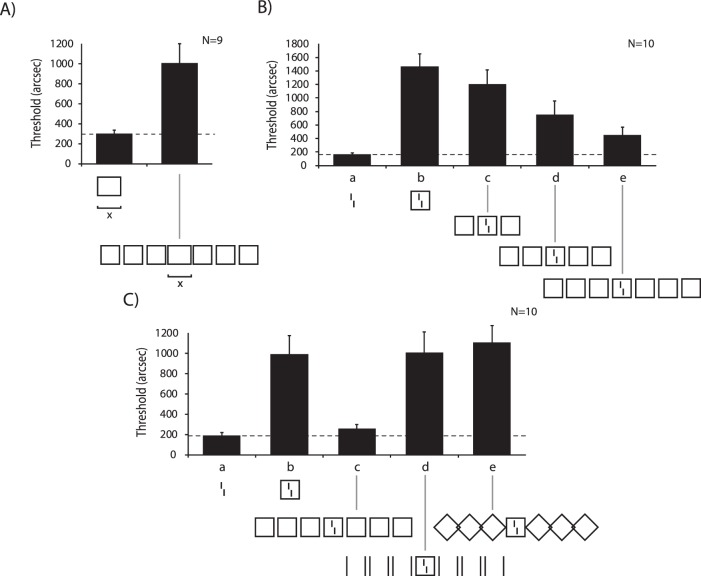Figure 2.
(A) Observers were asked to discriminate whether a rectangle was wider along the horizontal (x) or vertical (y) axis. We determined the threshold width for which 75% correct responses were obtained. When the rectangle was flanked by three squares on each side, performance strongly deteriorated compared to when presented alone. This is a classic crowding effect. (B) Next, we asked observers to discriminate whether a vernier was offset to the left or right (a). We determined the offset size for which 75% correct responses occurred (left bar and dashed line). Performance deteriorated (i.e., thresholds increased) when the vernier was surrounded by a square (b). This is another classic crowding effect. Surprisingly, vernier discrimination improved when we combined the two conditions. Performance improved gradually, with the more squares that were presented. Best performance occurred with 2 × 3 contextual squares. In this condition, the fixation dot is close to the leftmost square and the rightmost square is at 17.5° (i.e., well outside Bouma's window). (C) First, we repeated the basic conditions (a–c). Next, crowding was strong when we removed the horizontal lines of the flanking squares (d) or rotated the flanking squares by 90° (e). Data from (d) and (e) were collected in different experiments with different observers and are shown here together to ease presentation. In part (B), we adjusted square size individually to enhance effects. This explains the higher thresholds compared to (C). Modified from Manassi et al. (2013).

